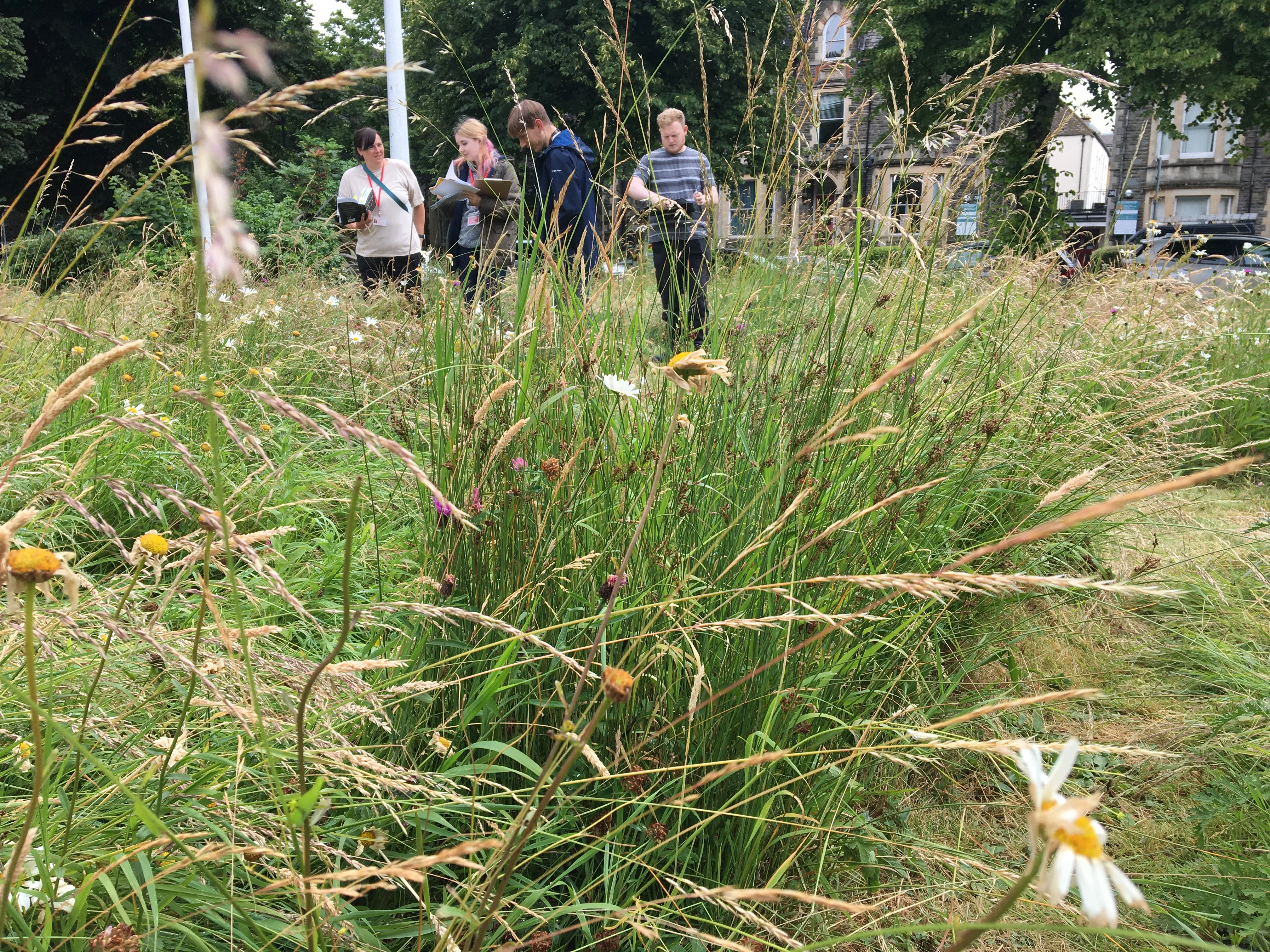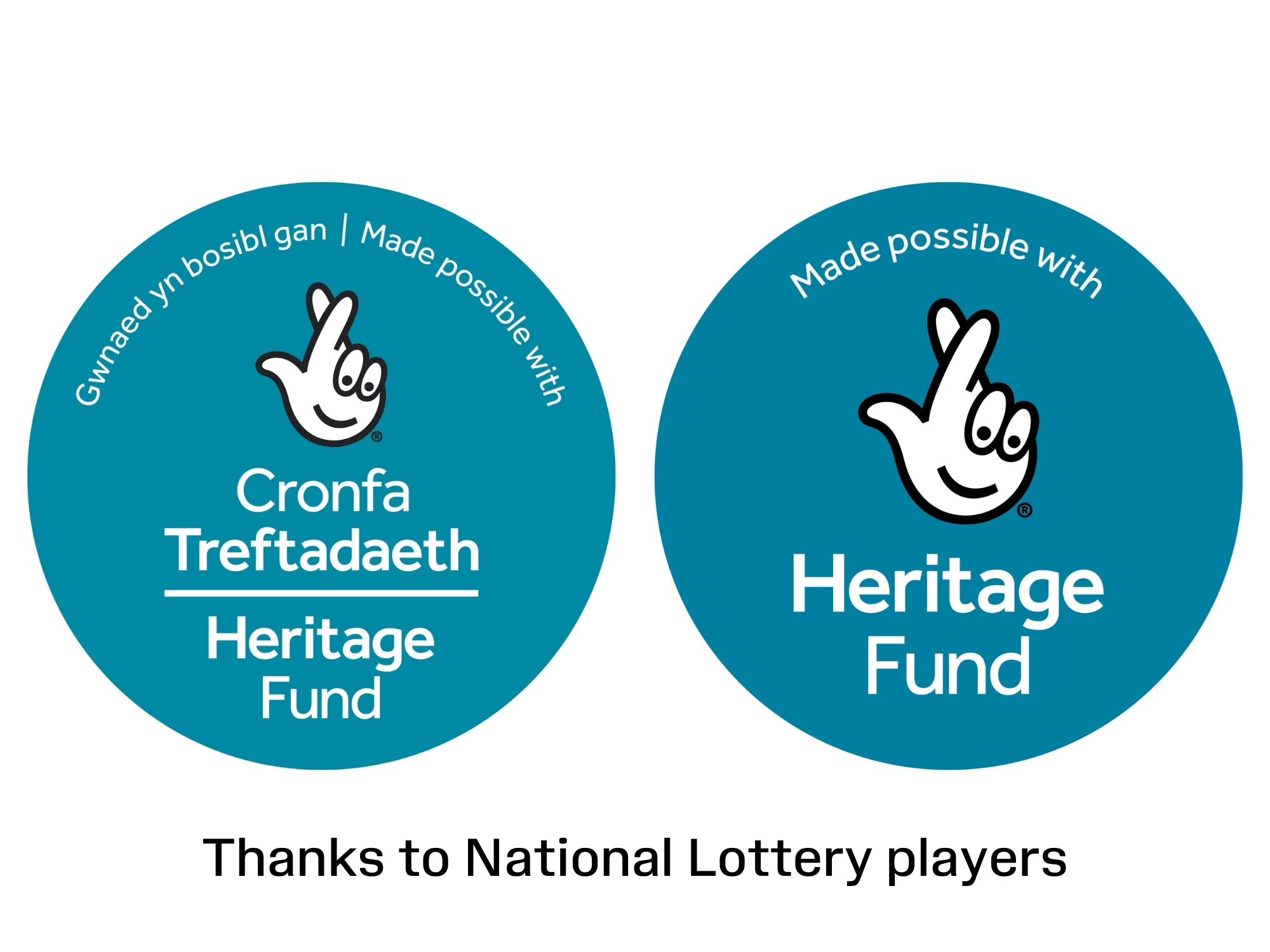The Urban Meadow at National Museum Cardiff
, 29 Hydref 2024
The Urban Meadow at National Museum Cardiff is a little haven for pollinators in the city centre. On a summer’s day it is teeming with bees, hoverflies, grasshoppers, ladybirds and craneflies.
Monitoring the meadow, and managing it for wildlife, is vital to make sure it continues to provide an environment where these creatures can thrive. Mowing too frequently, or not removing ‘problem plants’ like brambles and trees, could damage the harmonious interplay between different types of plant.
This year, with help from Greening Cathays and support from the National Heritage Lottery Innovation Fund, we’ve been trialling new methods of surveying the plant life so that Volunteers and non-specialist Museum staff can help us keep track of the meadow biodiversity. This will help us to manage the meadow in the future.
As well as contributing to our understanding of the meadow, our staff and volunteers have reported the well-being benefits of working outdoors:
“If I could, I would stay out here all day, it’s such a nice environment to be in”.
“I feel like I’m doing work – but it doesn’t have the stress of work. It’s the perfect balance”.
Staff and volunteers have also felt more motivated or confident to get involved outside of work:
“I have patch of grass at home, I’m now on a mission to rewild it. I really want to know how to do that, I feel more motivated now I’ve seen what can be there”.
"It’s quite empowering feeling you've recorded data that will be used, makes me want to get involved in more things like this".
What did we find?
On the Urban Meadow plants such as Common Bird’s-foot-trefoil (Lotus corniculatus), Oxeye Daisy (Leucanthemum vulgare), Lady’s Bedstraw (Galium verum) and Red Clover (Trifolium pratense) add colour to this part of the city every summer. The appearance of the meadow changes subtly throughout the season, depending on which plants are in flower.
Several native grasses, including Meadow foxtail (Alopecurus pratensis), Cock’s-foot (Dactylis glomerata) and Timothy (Phleum pratense) grow on the meadow. However, we do not want the grasses to outcompete other species.
The vegetation surveys demonstrated that, although the meadow is relatively small, there is a mosaic of plant communities, reflecting small-scale differences in environmental factors. For example, we found that one corner of the meadow is damper than the other three corners and a charmingly named grass called Yorkshire-fog (Holcus lanatus) has dominated here.
To let other flowering plants, which attract insects for pollination, have some space to grow we are going to invite staff to help with sowing seeds of Yellow-rattle (Rhinanthus minor) this autumn.
This annual plant is a parasite on grasses (Poaceae) meaning it gets nutrients by penetrating the roots of the grass, and restricting the its growth. Many meadows may need an application of Yellow-rattle seed this autumn because the grasses have coped better with the hot weather than the smaller brightly coloured plants. The Yellow-rattle seeds are sown in the autumn because they need to sit in the soil during the winter and experience the cold to germinate. The yellow flowers appear in spring, followed by seed pods which ‘rattle’.
We will also create training opportunities for staff and volunteers to help with scything the meadow to get the ground ready for the next year.
The Urban Meadow hasn’t just been an opportunity to increase biodiversity at National Museum Cardiff, it has helped people too. Cultivating a wildflower meadow takes years but is a testament to the resilience and ever-changing charm of the natural world. We hope to continue working with staff and volunteers to care for our meadow, for the benefit of people and plants.







